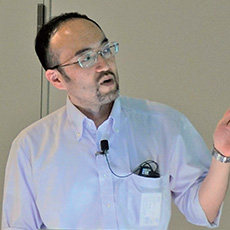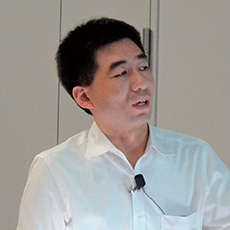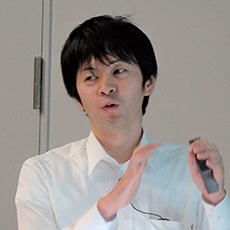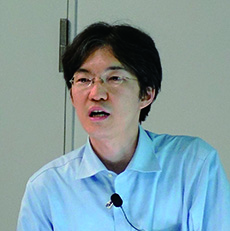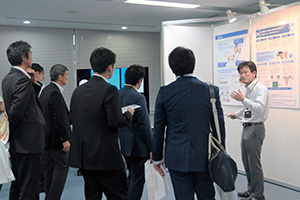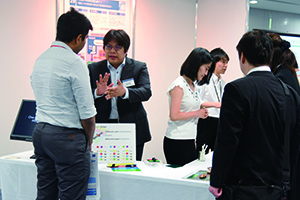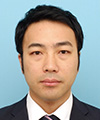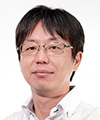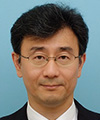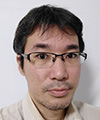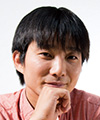 |
|||||
|
|
|||||
|
Information Vol. 16, No. 11, pp. 57–62, Nov. 2018. https://doi.org/10.53829/ntr201811in1 Event Report: NTT Communication Science Laboratories Open House 2018AbstractNTT Communication Science Laboratories Open House 2018 was held in Keihanna Science City, Kyoto, on May 31 and June 1, 2018. Over 1600 visitors enjoyed 6 talks and 29 exhibits, which included our latest research efforts in the fields of information and human sciences. Keywords: information science, human science, artificial intelligence 1. OverviewNTT Communication Science Laboratories (CS Labs) aims to establish technologies that enable heart to heart communication between people and people, and between people and computers. We are thus working on a fundamental theory that approaches the essence of human beings and information, as well as on innovative technologies that will transform society. NTT CS Labs Open House has been held annually with the aim of introducing the results of the CS Labs’ basic research and innovative leading-edge research to both NTT Group employees and visitors from industries, universities, and research institutions who are engaged in research, development, business, and education. This year, the Open House was held at the NTT Keihanna Building in Kyoto on May 31 and June 1, and over 1600 visitors attended it over the two days. We prepared many hands-on exhibits to allow visitors to intuitively understand our latest research results and to share a vision of the future where new products based on the research results are widely used. We also organized an invited talk. This article summarizes the event’s research talks and exhibits. 2. Keynote speechThe event started with a speech by the Vice President and head of NTT CS Labs, Dr. Takeshi Yamada, entitled “Shift to new dimensions—Further initiatives to deepen Communication Science” (Photo 1).
Dr. Yamada mentioned the remarkable progress being achieved in deep learning, including recent developments in artificial intelligence (AI) technologies, and said that CS Labs must not only consist of a group of masters who use these leading technologies at a high level but also a group of researchers who are constantly taking on challenges that will open up new dimensions. He then introduced recent efforts in human and information science research at CS Labs. He discussed how to cope with risks and uncertainties accompanying these new initiatives by explaining the Exploration-Exploitation dilemma, which is well known in the field of AI research. The dilemma involves whether to do deeper research in a field we have already studied (i.e., Exploitation), or to explore a field about which we have less experience and do research widely (i.e., Exploration). He declared that every researcher at CS Labs who is responsible for long-term fundamental research will seek to discover and explore new, unknown expanses of knowledge boldly and resolutely. 3. Research talksFour research talks were given, as summarized below, which highlighted recent significant research results and high-profile research themes. Each presentation introduced some of the latest research results and provided some background and an overview of the research. All of the talks were very well received. (1) “The real worth of quantum computers with elementary operations—Analysis of computational power of gate-based quantum computers,” by Dr. Yasuhiro Takahashi, Media Information Laboratory Dr. Takahashi focused on a gate-based quantum computer, which has theoretical evidence of being more powerful than today’s computers. There are many problems in realizing gate-based quantum computers equipped with a sufficient amount of computational resources, but he nevertheless introduced two of his recent results demonstrating that gate-based quantum computers are still powerful even under the more realistic condition where computational resources are limited (Photo 2).
(2) “Role of haptics in improving wellbeing—Science and design of touch can enhance human flourishing,” by Dr. Junji Watanabe, Human Information Science Laboratory Dr. Watanabe introduced a recently launched study on wellbeing. Wellbeing is gathering attention because research on designing mind-enriching information technology has been pursued recently from a standpoint that is different from the one aiming to merely achieve greater efficiency. He introduced several topics including measuring and specifying factors of wellbeing and modifying cognitive and empathetic attitudes towards oneself and others with haptic experiences (Photo 3).
(3) “Beyond combinatorial explosion—Enumeration and optimization with Binary Decision Diagrams,” by Dr. Masaaki Nishino, Innovative Communication Laboratory Dr. Nishino focused on a phenomenon called a combinatorial explosion, in which the number of possible combinations increases exponentially with the number of elements, which we have often experienced in a grouping or travel routes search. He explained how the number of combinations created by the combinatorial explosion can be counted by algorithms based on the data structure called a binary decision diagram (Photo 4).
(4) “Speech production and perception share common brain pathways—Investigation of the mechanisms of speech communication by speech conversion and brain imaging,” by Dr. Sadao Hiroya, Human Information Science Laboratory Dr. Hiroya introduced research on neural mechanisms underlying speech communication and showed the existence of the common pathways in the brain between speech production and perception, even though it has been considered that the pathways are different. He also discussed the difference between human brain mechanisms and speech recognition and synthesis techniques (Photo 5).
4. Research exhibitsThe Open House featured 29 exhibits displaying CS Labs’ latest research results. We categorized them into the following four areas: “Science of Machine Learning,” “Science of Communication and Computation,” “Science of Media Information,” and “Science of Humans.” Each exhibit was housed in a booth and employed techniques such as slides on a large-screen monitor or hands-on demonstrations, with researchers explaining the latest results directly to visitors (Photos 6 and 7). The following list, taken from the Open House website, summarizes the research exhibits in each category.
4.1 Science of Machine Learning
4.2 Science of Communication and Computation
4.3 Science of Media Information
4.4 Science of Humans
5. Invited talkThis year’s event also featured an invited talk by Dr. Hiroshi Nakagawa, group director, Artificial Intelligence in Society Research Group, RIKEN Center for Advanced Intelligence Project. The title of his talk was “AI, ethics and social impact.” He explained ethics guidelines for developing AI systems proposed in domestic and international organizations, personal data protection in big data utilization, and the proper way to have a relationship with AI. He also discussed the hot topic of whether AI will take away all our jobs. He pointed out that natural language processing will be one of the most important research fields for future AI technologies and explained the importance of redefining what our jobs are by ourselves from a higher viewpoint. 6. Concluding remarksJust like last year, many visitors came to NTT CS Labs Open House 2018 [1, 2] and engaged in lively discussions on the research talks and exhibits and provided many valuable opinions on the presented results. In closing, we would like to offer our sincere thanks to all of the visitors and participants who attended this event. References
|
|||||










